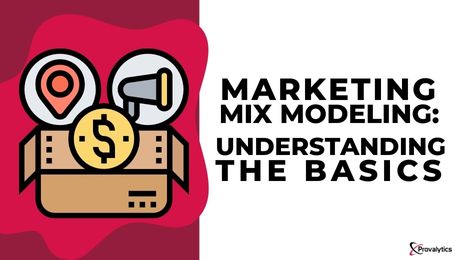Marketing Mix Modeling: Understanding the Basics
Marketing mix modeling’s goal;”>Marketing Mix Modeling is a statistical analysis technique that businesses use to assess and measure the effectiveness of their marketing strategies. It entails analyzing data from various marketing channels, such as television, radio, digital media, and in-store promotions, to determine how each component of the marketing mix influences sales and consumer behavior. Marketing mix modeling’s goal is to assist businesses in optimizing their marketing mix by determining the most effective combination of marketing activities.
Marketing Mix Modeling is a multifaceted undertaking that necessitates a thorough comprehension of marketing, statistics, and data analysis. The procedure entails amassing data on consumer behavior, market trends, and marketing activities. This data is then scrutinized using advanced statistical methods to recognize correlations and patterns amid the variables. The identified patterns can be used to establish a predictive model that can help estimate the effect of alterations to the marketing mix on sales and revenue.
🚀 Yes, I Want The 2024 Playbook!

Advantages of Marketing Mix Modeling
One of the most important advantages of marketing mix modeling is that it allows businesses to make informed decisions about their marketing strategies. Businesses can allocate marketing budgets more effectively and optimize their marketing mix for maximum impact by understanding the impact of various marketing activities on sales. For example, if the analysis reveals that TV advertising has a greater impact on sales than digital advertising, the company may decide to increase its investment in TV advertising while decreasing its spending on digital advertising.
Marketing mix modeling provides companies with the advantage of calculating the return on investment (ROI) of their marketing efforts. By tracking the impact of different marketing activities on sales and revenue, businesses can determine the ROI of each marketing activity and identify which activities generate the highest return. This information can then be used to optimize the marketing mix for maximum ROI and allocate marketing budgets more effectively.
The Importance of Marketing Mix Modeling
Marketing mix modeling is a valuable tool for businesses of all sizes and industries, particularly those with complex marketing strategies and multiple marketing channels. By analyzing data from various channels and identifying the most effective combination of marketing activities, businesses can optimize their marketing mix for maximum impact and ROI.
Marketing mix modeling is a powerful technique that can help businesses optimize their marketing strategies and increase their ROI by using advanced statistical techniques to analyze data from various marketing channels.
What is Marketing Mix Modeling?
Marketing Mix Modeling, is a statistical analysis method utilized by businesses to evaluate and quantify the efficiency of their marketing strategies. This process entails examining information from a wide range of marketing channels, including television, radio, digital media, and in-store promotions, to understand the impact of each element of the marketing mix on consumer behavior and sales.
What is the goal of Marketing Mix Modeling?
Marketing mix modeling is intended to assist businesses in optimizing their marketing mix by identifying the most successful combination of marketing strategies. Businesses can allocate marketing budgets more effectively and optimize their marketing mix for maximum impact by understanding the impact of various marketing activities on sales.
What are the advantages of Marketing Mix Modeling?
Companies can use marketing mix modeling to make informed decisions about their marketing strategies, estimate the ROI of their marketing activities, and optimize their marketing mix for maximum ROI and impact. This method is especially useful for businesses with complex marketing strategies and multiple marketing channels.
How is Marketing Mix Modeling done?
Marketing Mix Modeling involves gathering data on consumer behavior, market trends, and marketing activities. This data is then analyzed using advanced statistical methods to identify correlations and patterns among the variables. The identified patterns can be used to build a predictive model that can estimate the impact of changes to the marketing mix on sales and revenue.

